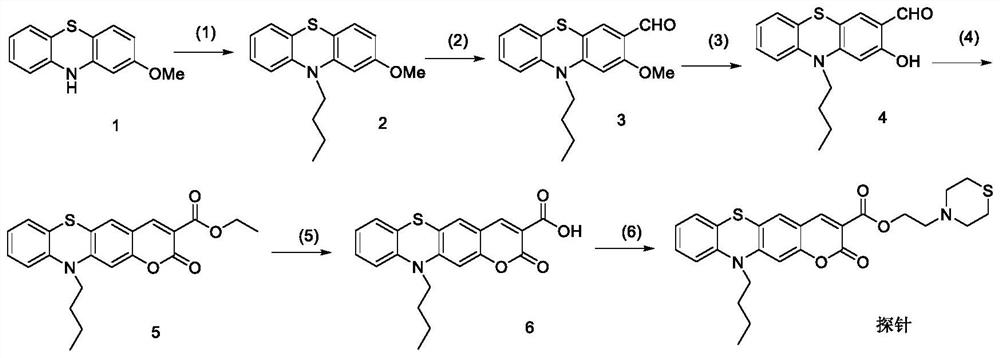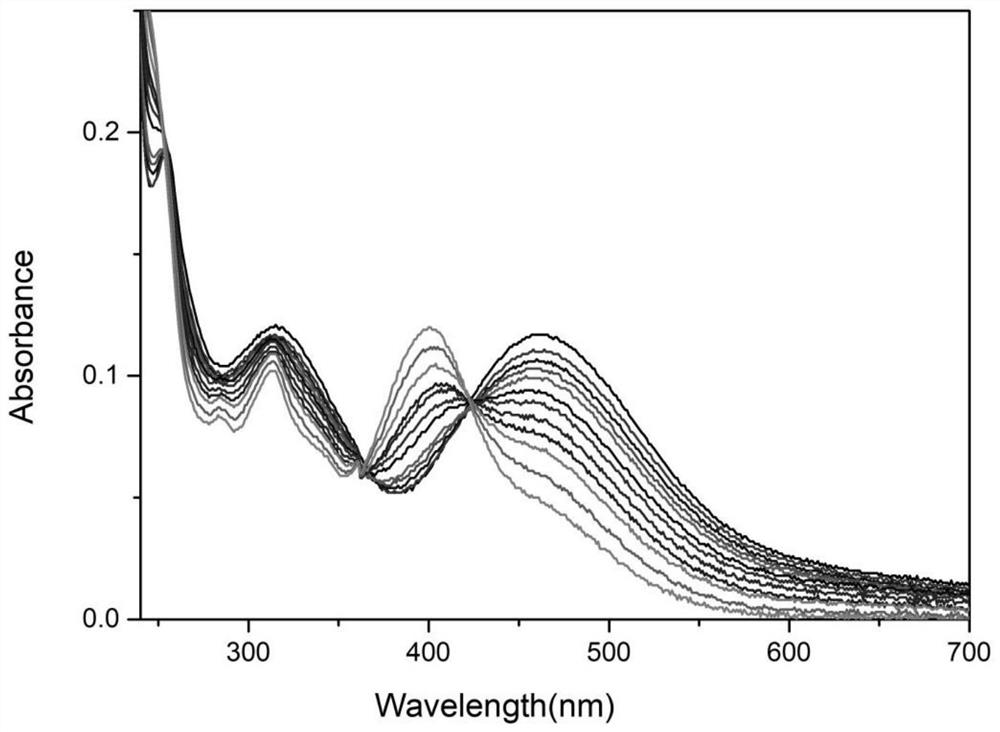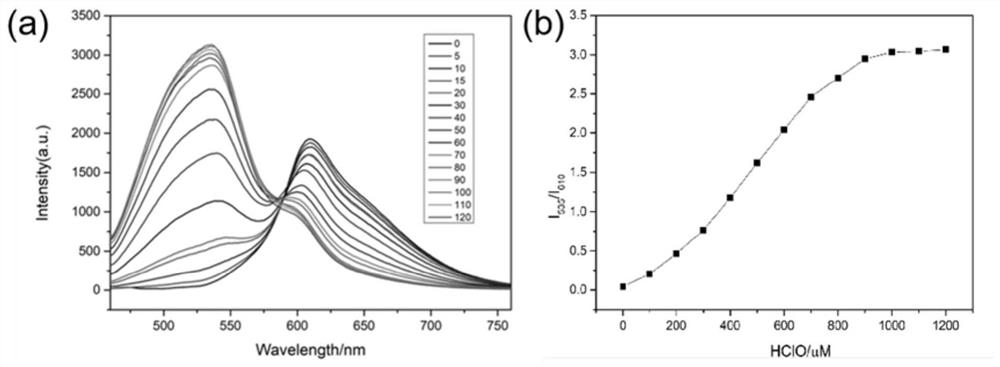A lysosome-targeted ratiometric hypochlorous acid fluorescent probe
A fluorescent probe, ratiometric technology, applied in the field of chemical analysis and detection, to achieve the effect of good selectivity, fast response speed, and strong anti-interference ability
- Summary
- Abstract
- Description
- Claims
- Application Information
AI Technical Summary
Problems solved by technology
Method used
Image
Examples
Embodiment 1
[0029] Embodiment 1: the synthesis of compound 2
[0030] Compound 1 (2.306g, 10.0mmol) and n-butyl bromide (2.765g, 20mmol) were dissolved in 25mL of anhydrous dimethyl sulfoxide, then sodium hydroxide (0.800g, 20.0mmol) and a catalytic amount of potassium iodide were added, 100 ℃, refluxed for 6h, after the reaction was completed, cooled to room temperature, extracted three times with dichloromethane, and evaporated the solvent under reduced pressure to obtain a crude product, which was separated and purified by column chromatography (petroleum ether / dichloromethane=2 / 1, v / v) The product 2 was obtained as a colorless oily liquid. Yield: 2.5935 g; Yield: 95.0%.
Embodiment 2
[0031] Embodiment 2: the synthesis of compound 3
[0032] Under argon protection, N,N-dimethylformamide (0.51mL, 7.2mmol) was slowly added to phosphorus oxychloride (0.6mL, 7.2mmol), stirred in an ice-water bath for 15min, intermediate 2 (1.6767g , 6mmol) was dissolved in anhydrous N,N-dimethylformamide, then added to the above solution, refluxed at 60°C for 4h, after the reaction was completed, the mixture was poured into 50mL ice water, and then washed with 10% sodium hydroxide solution Neutralized, extracted three times with dichloromethane, dried the organic phase with anhydrous sodium sulfate, and evaporated the solvent under reduced pressure to obtain a crude product, which was separated and purified by column chromatography to obtain product 3 as a yellow solid. Yield: 1.3146 g; Yield: 70.1%.
Embodiment 3
[0033] Embodiment 3: the synthesis of compound 4
[0034] Aluminum powder (0.2025 g, 3.6 mmol) was added into anhydrous acetonitrile (15 mL), and stirred at room temperature for 5 min. Iodine (0.0306 g, 2.55 mmol) was added in portions to the mixture, and stirred under nitrogen protection. Compound 3 (0.9530 g, 3.0 mmol) was dissolved in anhydrous acetonitrile (15 mL), and added dropwise to the mixture. The resulting suspension was refluxed for 6h. After cooling to room temperature, the mixture was extracted 3 times with 100 mL of ethyl acetate. The organic phase was dried with anhydrous sodium sulfate, and the solvent was evaporated to dryness under reduced pressure to obtain a crude product, which was separated and purified by column chromatography (petroleum ether / dichloromethane=1 / 1, v / v) to obtain product 4 as a yellow oily liquid. Yield: 0.7891 g; Yield: 87.3%.
PUM
 Login to View More
Login to View More Abstract
Description
Claims
Application Information
 Login to View More
Login to View More - R&D
- Intellectual Property
- Life Sciences
- Materials
- Tech Scout
- Unparalleled Data Quality
- Higher Quality Content
- 60% Fewer Hallucinations
Browse by: Latest US Patents, China's latest patents, Technical Efficacy Thesaurus, Application Domain, Technology Topic, Popular Technical Reports.
© 2025 PatSnap. All rights reserved.Legal|Privacy policy|Modern Slavery Act Transparency Statement|Sitemap|About US| Contact US: help@patsnap.com



